


|
|
|
|
Russia was a pleasant surprise. The areas from St. Petersburg to Moscow were composed of beautiful green forests with many types of trees, especiallyBirch.
We went from St. Petersburg to Moscow on five rivers, three lakes, one the largest in Europe, a canal, and 18 locks. The boat was a splendid way to see North Western Russia!
Please select the statistics link for an overview of the country of Russia.
I have had great trips on river boats which include the following rivers:
the Nile - Yantze - Amazon - Mississippi - Seine - Chao Phraya - Zambizi - Thames - Tiber - Volga and others!
|
Finair from San Francisco to Finland, then to St. Petersburg Russia |
 |
||||
|
San Francisco to Finland and on to St. Petersburg, Russia. - Flying over the Golden Gate from San Francisco! |
||||
|
Space. |
||||
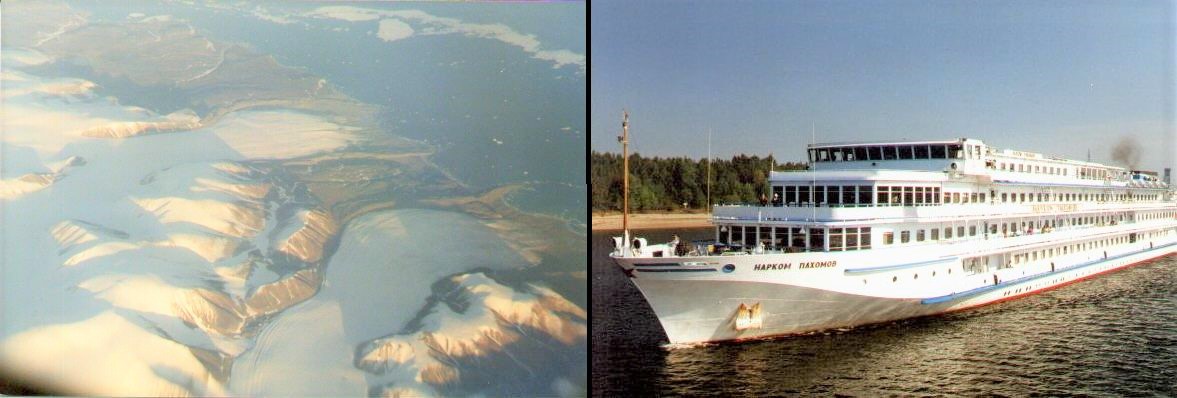 |
||||
|
Flying over Iceland! - First day in St. Petersburg and our Ship! |
||||
|
St. Petersburg - City of Czars |
We arrived early in the afternoon from Helsinki and transferred to the boat, the M/S RUSS around three P.M. Saturday and within an hour two of us left the boat, found the subway, the Prolyetarskaya Station, and took off.
We first met a woman in the subway station who asked us if we needed help. She was from Moscow visiting friends. Said she was coming to the United States to visit someone in North Dakota! She asked us if North Dakota was one of the better places to visit in the winter. She looked at our expressions and just laughed, sounds like the Russian winters she said! So nice.
We also met two men from Cleveland who were there to setup a Disco Bar for some entrepreneur
in St. Petersburg. We asked if the Russians couldn't figure out how to do that and they said "No!" There doesn't seem to be much money around but everyone seems to be able to smoke and drink. Great priorities! Of course with nine months of darkness and cold I guess you do what you have to!
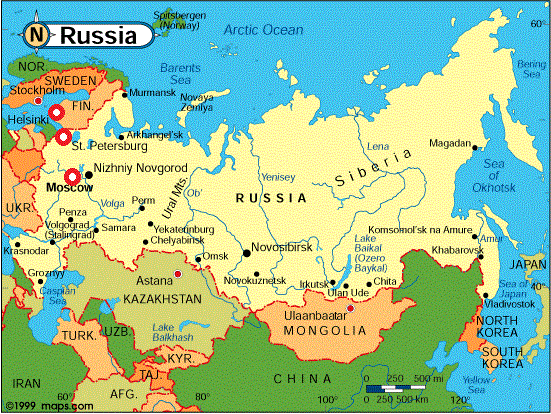
We got off at the main stop downtown and started to walk around. What a surprise, we were right in front of the Winter Palace.
Here is an overview of the Winter Palace:
The Winter Palace is undoubtedly the most famous building of imperial St. Petersburg, not only as the residence of the Tsars and the backdrop for the 1905 and 1917 Revolutions, but also as the home of the Hermitage, the world's largest museum of art. The present structure, completed in 1762 and designed by Bartolomeo Rastrelli, was commissioned by the Empress Elizabeth. Its opulent baroque facade, stretching two hundred meters, is a veritable cornucopia of pilasters, bays, and statuary. The palace served as the winter residence for every ruler of Russia since Peter III, who installed himself there along with his mistress, the Countess Vorontsova.
After his wife Catherine the Great seized the throne, she redecorated and appropriated her husband's old quarters. While her son Nicholas I lived in a modest apartment there, his wife Alexandra commissioned the famously luxurious Malachite Room, later to be used as the meeting place for Kerensky's Provisional Government. Nicholas II had his quarters immediately above this room until 1904, when he moved from the increasingly discontented capital to Tsarskoe Selo.
In July of 1917, the Provisional Government took up residence here, thus setting the stage for the October Revolution. After consolidating its power, the Bolshevik government transferred its capital to Moscow, and since that time the Winter Palace has been associated primarily with its role as the Hermitage Museum.
We walked back to the boat, about 15 blocks, and it was wonderful. About 70 degrees and people having coffees and drinks at side walk cafes. Entertainment groups dancing, singing, and trained dogs doing tricks for the people passing by. Also met an artist at the Winter Palace, doing pen and ink drawings to help pay for the Technical School he was going to. All in all, a great way to start the first day in Russia!
On Sunday we were invited to go to the Hermitage Theatre to see the ballet preformed by various dancers from the famous Mariinsky (Kirov company).
Carol and I got dressed up, me in a dark suit and gold tie and she in a smart black dress. We looked outstanding compared to some of the others, shorts and messy shirts! Getting into the theater is exciting as you walk up several flights of stairs in the Winter Palace and then walk across an enclosed bridge with windows overlooking the canal and the Neva River. The theater is one of the oldest and one of the most beautiful theatrical buildings that survive in St. Petersburg and was erected in 1785 by an Italian architect, Giacomo Quarenghi. Since the theater was to be built in the shortest possible time, the walls of the Old Winter Palace and the apartments of the Czar Peter the First were used. The building is designed like an amphitheater. The walls are decorated with sculptures of Apollo and the nine muses. Two and three operas a week were performed. The Empress Catherine the II lavished large sums of money on importing composers, artists, and dancers for her entertainment. Very few ever saw the theatre, just the members of the royal family and maybe 20 or 30 invited guests. The theater has only 250 seats and in the 1980s a full reconstruction was undertaken. In 1989, the Hermitage Theatre had its second birth as the premier theater in St. Petersburg. The next day we just ran around the city on our own enjoying the weather and sights.
Canals and Buildings
Grand Canal - Venice of the North - Buildings along the River Front
Various Office & Government Buildings
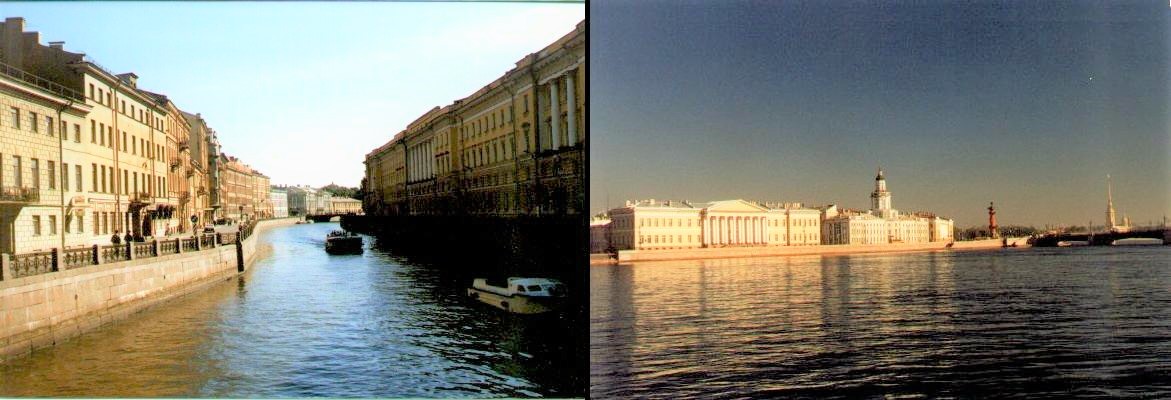
Space.

Famous Churchs
 |
|||
|
|
|
||
| Space. | |||
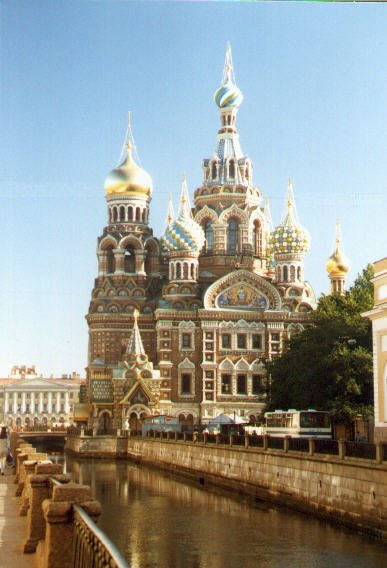 |
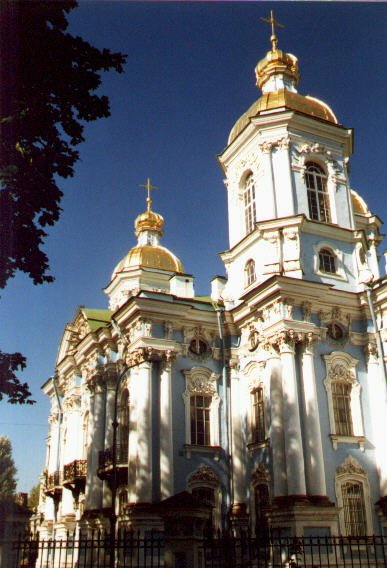 |
||
|
|
|
||
Ballet at the Winter Palace
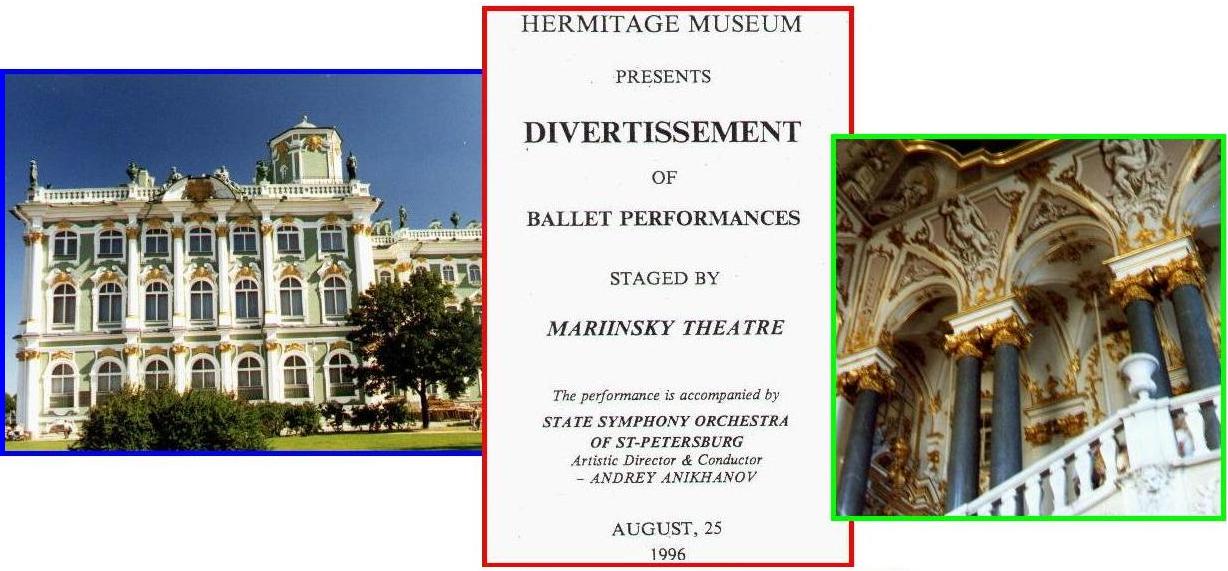 |
||||
|
Hermitage and the Ballet - Great Staircase
|
||||
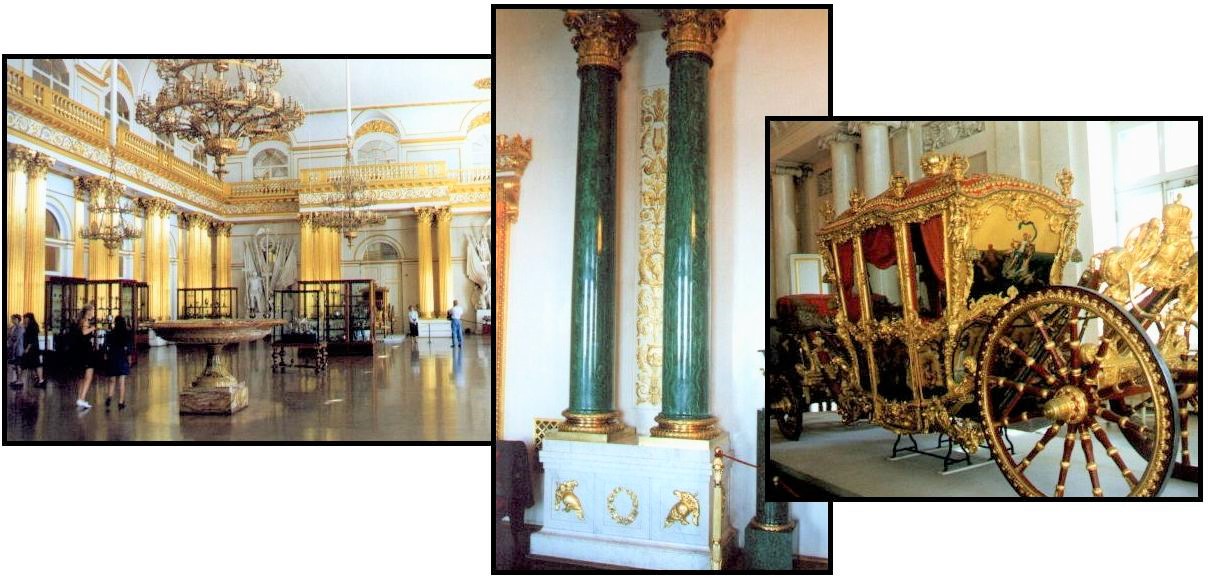 |
||||
|
The Gold Room and the Malachite Room - Royal Carriage |
||||
| Space. | ||||
|
The Winter Palace
The Winter
Palace is undoubtedly the most famous building of imperial St. Petersburg,
not only as the residence of the Tsars and the backdrop for the 1905 and
The palace served
as the winter residence for every ruler of Russia since Peter III, who
installed himself there along with his mistress, the Countess Vorontsova.
After his wife Catherine the Great seized the throne, she redecorated and
appropriated her husband's old quarters. While her son Nicholas I lived in
a modest apartment there, his wife Alexandra commissioned the famously
luxurious Malachite Room, later to be used as the meeting place for
Kerensky's Provisional Government. Nicholas II had his quarters
immediately above this room until 1904, when he moved from the
increasingly discontented capital to Tsarskoe Selo.
In July of 1917, the
Provisional Government took up residence here, thus setting the stage for
the October Revolution. After consolidating its power, the Bolshevik
government transferred its capital to Moscow, and since that time the
Winter Palace has been associated primarily with its role as the Hermitage
Museum. | ||||
|
Petrodvorets - Summer Palace of Peter the Great |
Tuesday was another great day, drove to the Puskin Village and then to
Petrodvorets, the summer palace of Peter the Great, famous for its collection of life size gilded statues standing on terraces facing the Gulf of Finland with enormous fountains everywhere! The apartments are sumptuous and were created by Empress Elizabeth using Rustler to accomplish a blend of medieval Russian architecture and Baroque. The throne room, much like the one in Catherine the Greats palace, is huge and the walls are covered with gold leaf and mirrors. I tried to count the candle holders on the walls but stopped at around 400. Lots of servants busy making and lighting candles if nothing else. The ceiling has an enormous painting on it and all in all, the palace is a delight to view. The rooms have been or are being renovated back to the original format. Special artisans are creating silk wall coverings, pargued floors, frescos and many other arts that would be lost without this interest in preserving their history.
Summer Palace of Peter the Great

|
Catherine the Greats Palace |
Here I am in front of another of Rastrelli's baroque masterpieces, the luxurious Catherine Palace, summer residence of Empresses Elizabeth and Catherine the Great, is vast.
Among the many resplendent chambers is the Amber Room, originally constructed by Rastrelli from panels presented by Frederick of Prussia to Peter the Great (reconstruted since as the Nazis stole the originals).
Catherine the Great commisioned Charles Cameron to redesign the palace interior in 1779. His two greatest creations are the Cameron Gallery and the Agate Pavilion in the courtyard furnished with semi-precious stones.
Outside, you can wander in the palace gardens or row on the ornamental ponds.
Catherine the Great's Palace
Peter and Paul Fortress - Cathedral of SS Peter and Paul
Today, the Peter and Paul Fortress is for the most part under the auspices of the St. Petersburg Museum of History, with a number of permanent and temporary exhibitions charting the various aspects of the compound's past. While the central visitor attraction is undoubtedly the St. Peter and Paul Cathedral, one of St. Petersburg's most striking buildings, there is plenty within the walls of the fortress to keep children and adults occupied for a full day at least. The Peter and Paul Fortress is also the centre of a number of St. Petersburg urban traditions, among them the daily firing of the cannon from the Naryshkin Bastion at noon and the "walruses" who use the beach in front of the fortress to sunbathe and swim in ice-holes in the winter. In the summer, the beach is a popular picnic site and is also used to host a variety of events, festivals and concerts, including the respected Petrojazz annual festival.
State Hermitage Museum
Here is more information available concerning the State Hermitage Museum.
With the possible exception of the Louvre, there is no museum in the world that rivals the Hermitage in size and quality. Its collection is so large that it would take years to view it in its entirety--at last count, there were nearly three million works on exhibit. The museum is especially strong in Italian Renaissance and French Impressionist paintings, as well as possessing outstanding collections of works by Rembrandt, Picasso, and Matisse. Visitors should also take advantage of its excellent Greek and Roman antiquities collection and its exhibits of Siberian and Central Asian art. Not least among the attractions of the Hermitage is the museum itself, with its fine interior decoration and architectural detail. As the Hermitage is so enormous, its collection so strong and diverse, and its interior so attractive in its own right, many visitors find that the very best way to tour the museum is to make several briefer visits rather than one frenetic and exhausting marathon tour. While there is much to be gained by simply allowing the curiosity of one's eye to take at least occasional precedence over a list of works and collections dictated by a guidebook or even a guide. The origins of the Hermitage can be traced back to the private art collection of Peter the Great, who purchased numerous works during his travels abroad and later hung them in his residence. Catherine the Great expanded the collection considerably, and she and her successors built the Hermitage collection in large part with purchases of the private collections of the Western European aristocracy and monarchy. By the time Nicholas II ascended the throne in 1894, he was heir to the greatest collection of art in Europe. After the Revolution of 1917, the museum was opened to the public, and its collection was further augmented by the addition of modern works taken from private collections. Today, the Hermitage has embarked on a major renovation effort. Its collection is in the process of being reorganized, and many of its works have for the first time become available for traveling exhibits outside of the country.
After a few very busy days we were ready to take the boat and begin our trip to Moscow covering rivers, lakes, canals and locks!
Overview of Rivers - Lakes - Locks
Kizhi Overview
Kizhi
Back of Church. - Family House.
Petrozavodsk
Four Months of Sun - Eight Months of Freezing Weather
We saw bananas being sold with a box
labeled Dole! The children are getting a ride on the decorated
wagon!
Rivers - Canals - Lakes
Rivers and Locks
Irma Overview
Irma
Tea and Cookies!
We also stopped at Catherine the Greats Palace that originally was begun by Empress Elizabeth. Catherine extended the palace but took off the gilding on the huge statues that look like they are holding up the building because it looked like too much even for her! Building is white and blue with gilded roofs and is situated in hundreds of acres of park, canals, lakes, beautiful trees, and walk ways that you could spend days walking around and enjoying the scenery.

The first structure to be built in St. Petersburg, and thus the birthplace of the city, it never served its intended defensive function. Instead it has had a rich, hugely varied, and sometimes sinister history as a military base, a home of government departments, the burial ground of the Russian Imperial family, the site of groundbreaking scientific experiments, and a forbidding jail that held some of Russia's most prominent political prisoners.
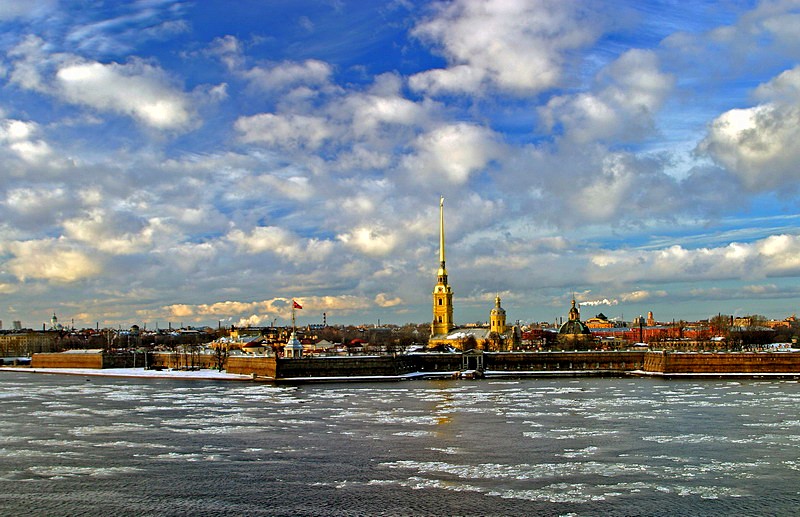
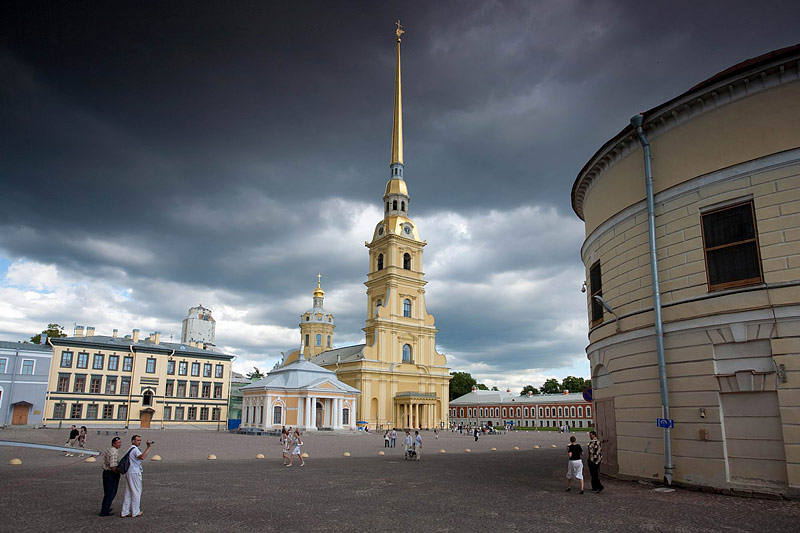

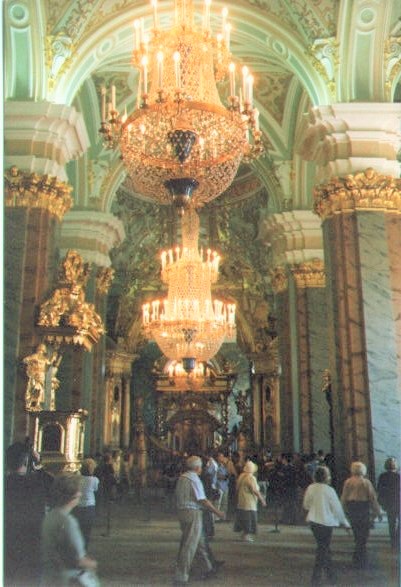
The Cathedral of SS Peter and Paul is the oldest church in St. Petersburg, and also the second-tallest building in the city (after the television tower). It is intimately linked to both the history of the city and to the Romanov dynasty, as it is home to the graves of nearly all the rulers of Russia since Peter the Great.
Finally the one main reason to come to St. Petersburg, the State Hermitage Museum. An enormous building on the banks of the Neva River that stretches for blocks. In reading about the construction, I realized how little life
meant to most of the aristocrats. The building is enormous and was built within about four years. In the course of that time approximately 40,000 people died, most from working outside in the winter at freezing temperatures and mixing plaster and doing other work and then having to come into the rooms that had fire places roaring with fires to heat the rooms to 90 degrees or more in order to dry the plaster for fresco painting. There are rooms covered with gilding, rooms covered with Malachite, ivory, frescos, Italian crystal chandeliers, and so on. Painting everywhere. One enormous room had nothing but
Rembrandts, dozens of them it seemed! This museum is like Louver, too much to see and to little time. The lighting is extremely bad and there doesn't seen to be any temperature control. The building is in bad shape but they are starting to do some repair work outside and am told they have asked the Louver and Metropolitan Art Museum to send some personnel that can help them in restructuring the Hermitage.

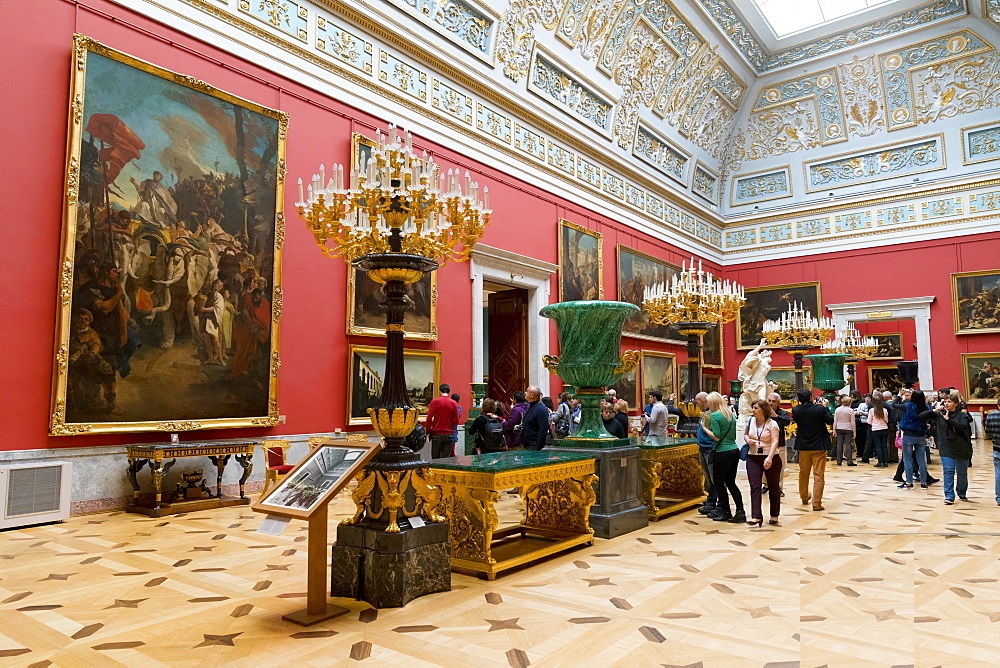
Well here we go, leaving St. Petersburg after four wonderful days of sight seeing. Lifted anchor so to speak, and off up the Neva. It's around 9 P.M. Woke up about 4 A.M. and looked out the window, looked like we were on the ocean. It was Lake Ladoga, the largest lake in Europe. A very strange feeling, misty and mysterious. It's about 600 feet deep with over 600 islands in its fresh water. There are over 50 varieties of fish including trout, salmon, and sturgeon. Next we left Lake Ladoga and entered the 140 mile long Svir River. We pass many villages and pass through the first lock of many (the Lower Svir Lock). Now we leave the Svir and enter the Onega Lake, 170 miles long and 60 miles wide, a depth of 350 feet. Pike, perch, bream and burbot abound in the clear waters.
We now arrive at Kizhi for a walking tour on the island to see the 22 domed Transfiguration Church built in 1714. It is built with wooden beams and shingles without the use of any nails. This was one of the more interesting islands. There were old farm houses, windmills, and other types of farm structures. Back to the boat to visit the next town.
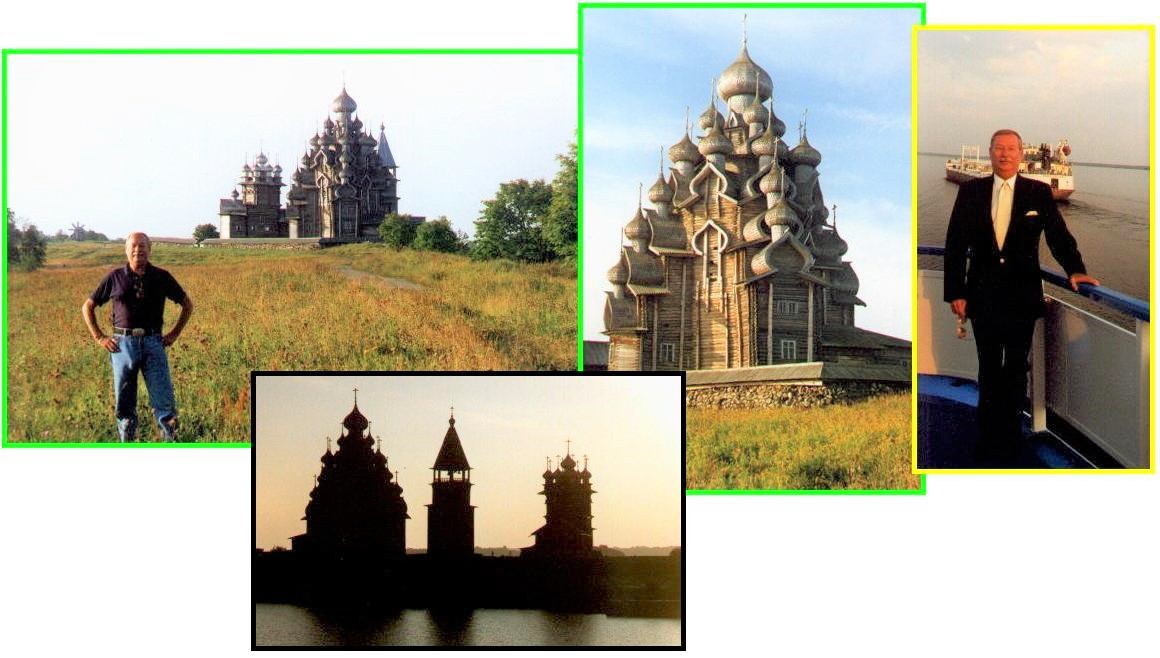
Space.
Space.
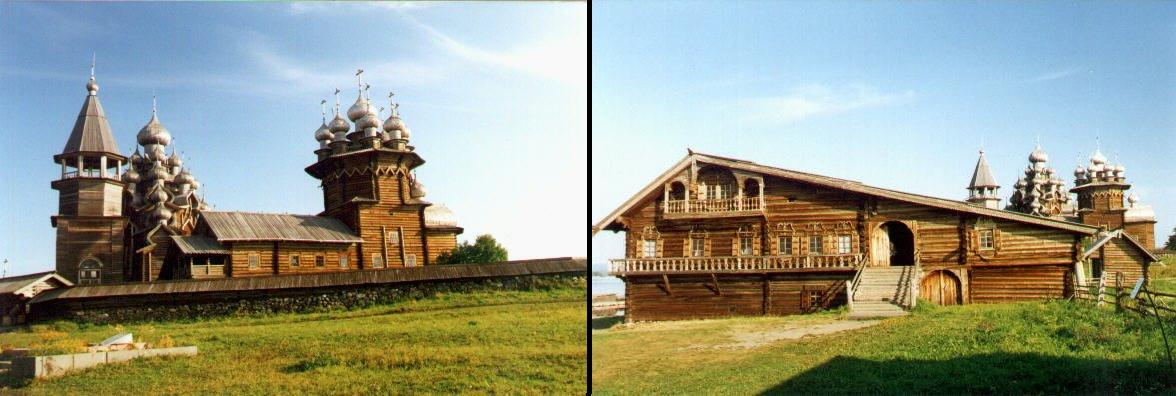
Next stop Petrozavodsk which was founded in 1703 by Peter the Great. Petrozavodsk means factory in Russian. It was originally set up as an iron foundry and armaments plant. Later it was used as a place of exile for the tsars and Bolsheviks. We also see a concert of the innovative Karelian music and dance ensemble. The city doesn't have much going for it and I guess that one of the few ways to make money for them is the to put on these folk dances during the summer months with the cruise ships and then hunker down for the winter. They said it is so bleak, cold and dark from 4 in the afternoon to 8 in the morning for months on end. Must be very bleak all over the part of any country that is so far north.

We now enter the Volga-Baltic Canal and pass through six locks. We enter the Kovzha River and the White Lake and then enter the Sheksna River.
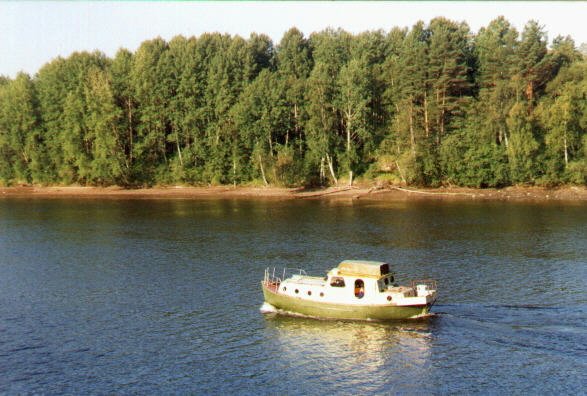

Finally a day of relaxation. A stop at Irma, a small village and a picnic with walking tours of the island and visiting people staying in their summer dachas. Met two sisters that are school teachers and we had tea in their dachas along with cookies. I asked them if they made them and they laughed, no, from the store. Then I looked at them and guess what, stamped on them was Mickey Mouse and Donald Duck. Can't get away from it.
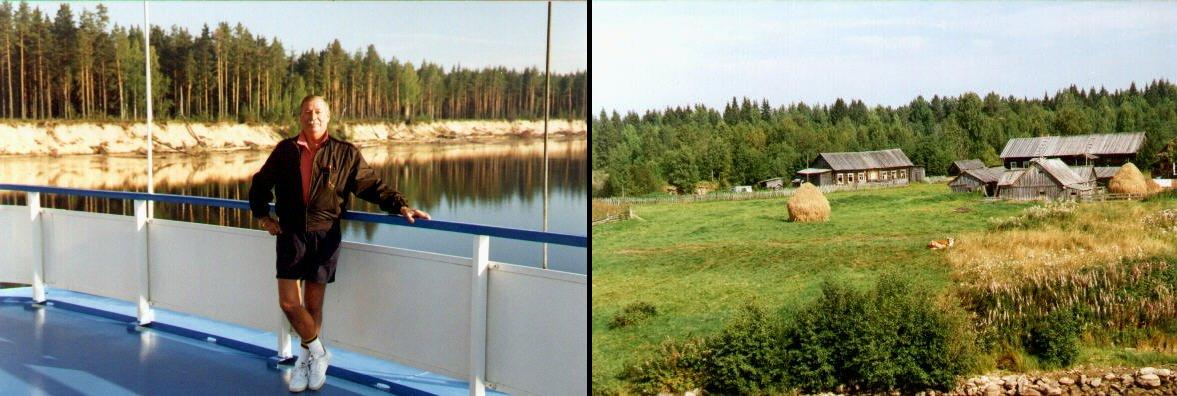
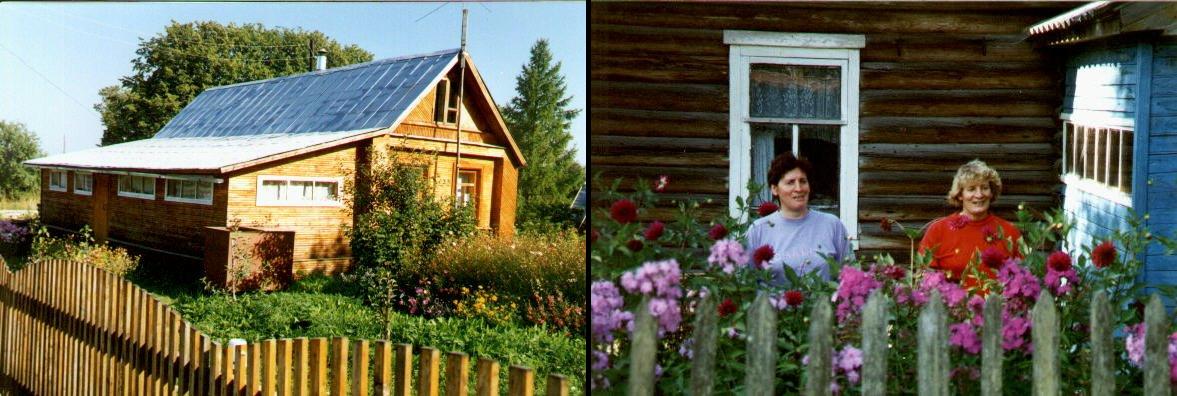
|
Massage 'Specialist'! |
Locks and a Horse Patrol
As we pulled into the lock the horse checked out the bow of the ship. He then flew like the wind to the stern of the ship and watched to see when the lock gates began to shut.
As soon as they began to close, he rushed back and forth looking for anyone that might have apples or what ever to eat. As soon as the ship was high enough for him to reach an item, he would grab it, chew like mad and try and swallow it so he could grab something else.
The poor thing was worn out by the time the ship pulled out of the lock but he was full and happy. He even knows the times the ships should be approaching the locks! He then went under a tree to lie down and take a nap until the next ship appeared.
Our guide said he has been doing that for about six years and is very unhappy when winter sets in and the rivers freeze over as he doesn't get his fix of snacks then!
Stops along the Way on the Volga.
Dressed for Dinner
I Dressed for Dinner Every Night! - This
woman's son said his mother was celebrating her 80th birthday so we all
had champagne!
Overview of Moscow
Puskin Museum
Armory Museum
There was a woman massage "specialist" on board the ship and all the men were hot for massages! Many wives decided to give their husbands gift certificates for massages. The men would all come back and announce very loudly that they just had a massage. I was having some shoulder and neck problems (truly), so decided to get a massage. She had a cabin all set up and as she massaged me told me about herself. She had worked in the St. Petersburg film industry and after the collapse of the Russian government, the film industry fell apart in both St. Peterburg and Moscow. She has a son living in Isreal who joined the airforce as a jet pilot and she was afraid if there was a war he would be killed. I kind of doubted this ascertian as
![]() friends of mine that were born in Russia and moved to Isreal told me you can't get a clearance even if you are Jewish because you were born in a former Communist country. Anyway, the massage was suppose to be for about 45 minutes but it stretched out to an hour and 45 minutes! She told me how nice it would be to vist San Francisco, you can imagine how often I have heard that! It was getting late, I didn't want to miss dinner so tired to get out of the cabin.
She pushed me up against the wall in the hallway and planted a kiss on my cheek, tried for my mouth but I struggled, me 220 pounds and her 100 pounds! I continued to struggle and finally escaped and when I got to the dinning room everyone looked at me and asked why I was so flushed and why I was gone for almost two hours. I told them what had happened and everyone cracked up. The men asked me why I was hit on and they weren't, I asked them if they wanted her on their door step someday without a green card. Be glad you weren't hit upon! Everyone agreed, especially the wives!
friends of mine that were born in Russia and moved to Isreal told me you can't get a clearance even if you are Jewish because you were born in a former Communist country. Anyway, the massage was suppose to be for about 45 minutes but it stretched out to an hour and 45 minutes! She told me how nice it would be to vist San Francisco, you can imagine how often I have heard that! It was getting late, I didn't want to miss dinner so tired to get out of the cabin.
She pushed me up against the wall in the hallway and planted a kiss on my cheek, tried for my mouth but I struggled, me 220 pounds and her 100 pounds! I continued to struggle and finally escaped and when I got to the dinning room everyone looked at me and asked why I was so flushed and why I was gone for almost two hours. I told them what had happened and everyone cracked up. The men asked me why I was hit on and they weren't, I asked them if they wanted her on their door step someday without a green card. Be glad you weren't hit upon! Everyone agreed, especially the wives!
Next we entered the Rybinsk Reservoir which took six years to fill in the 1940s. Next the city of Kostroma which is one of the Golden Ring jewels which was founded in the 14th century.
Highlights of this tour is the famous Ipatyevsky Monastery founded in the 14th century.
One day as we approached a lock we saw a horse at the top of the lock
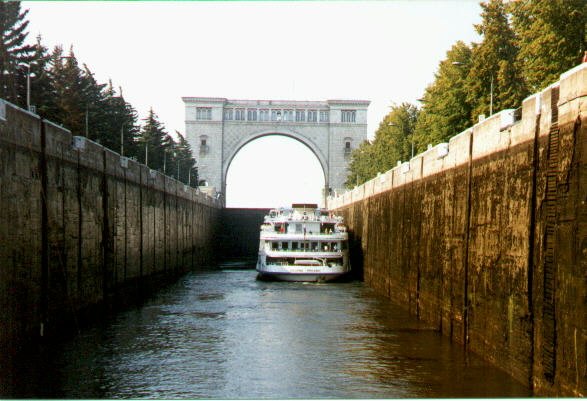 looking back
and forth for a ship! We wondered if we were really seeing this.
looking back
and forth for a ship! We wondered if we were really seeing this.
We sail back along the Volga to our next destination, Yaroslav, founded in 1010, making it the oldest city on the Volga. This city has enjoyed prosperity as a major mercantile center and thus a number of merchant churches and the Grand Savior's Monastery.
We pass through the Rybinsk Lock, the largest on our trip, 54 feet tall. We arrive at the town of Uglich, founded in 1149. It is famous for the Church of Prince Dimitry on the Blood and the famous Chaika watch factory. We pass through six more locks on the Moscow Canal which was completed in 1937 by Stalin (after five years of forced labor). It is 127 kilometers long and connects Moscow to the Volga.

During our stay in Moscow we were lucky when visiting the Puskin Museum of Fine Art in seeing the Schliemann
Gold articles discovered in Troy. The museum is very clean, has a good Egyptian collection and also has life size models of various buildings and statues from various ages such as ancient Greek and Persian eras.
Important:
There is an addition to the museum, a much smaller building but not to be missed. There are about eight rooms and each was filled with fantastic paintings. Many we had never seen before, even in art books. Von Gough, Picasso, Degas, Monet, and so on, a feast for the eyes!
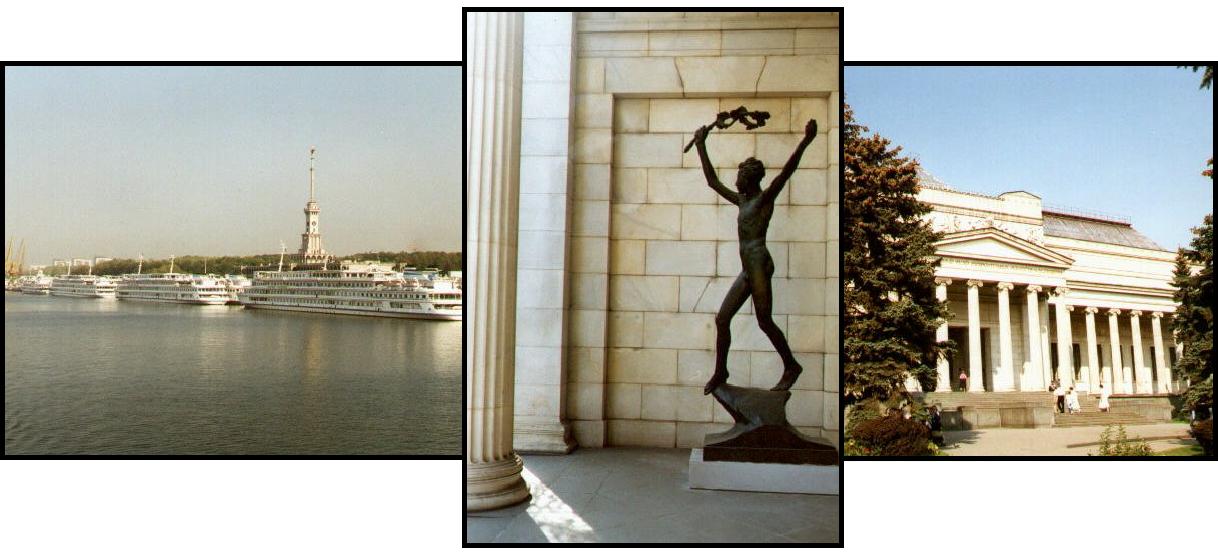
Diplomatic Incident:
The guide decided on the first night that we toured Moscow that we should stop at the American Embassy. As soon as the bus stopped we all jumped out and ran to the front gate.
The guide tried to stop us but to no avail. I, being in the lead demanded of the guard, "We are tax payers and want to see the American
diplomat as we want to see where our money is being spent!" The guard had a trauma and didn't know what to do. He got on an intercom and called for help. He was a Russian guard and couldn't speak English! We thought that was very strange. Several other guards came running down the drive with guns and the guide just shook her head. They shook their heads "No" and when we told them we were from California they just shook their heads some more! Next, on to McDonalds in down town Moscow.
We also saw the Central Moscow Circus on Tsvetnoy Boulevard and I wasn't sure I wanted to go as far as animal cruelty is concerned. There was only one act, the bears, that seemed out of place. A lot of people including Americans thought it was great when the trainer yanked them around. You could see the bears were pissed and hated what was happening. But everything else was fantastic. A dog act, Poodles of all dogs doing wonderful tricks and you could tell they loved their trainer. Sometimes they would fight over who got to do the next trick, a joy to watch. A Mongolian horse show and acrobatics, special lighting, and music, made for a great evening!
The Armory Museum in the Kremlin is another fantastic museum and contains many of the gold and silver urns and other works that the tsars and other European royalty had made for presentations to each other. Some were solid silver and then gold platted. There were the actual cloths of Catherine the Great and Peter the Great. Another room had the carriages for the royalty from about 1600 to 1900. One of the first was so big and heavy it took about 16 horses to pull it. The front wheels on this carriage were locked in place and couldn't turn a corner so when the Czar took a trip, slaves ran behind the carriage and when a sharp curve appeared in the road, the serfs had to lift the back of the carriage and move it around so the carriage could continue down the road! Even the guide wondered why the peasants didn't revolt sooner when having to put up with such things. Catherine's summer carriage was a convertible and had little foot steps up to the carriage that were covered with needle point some poor worker had to make so Catherine wouldn't have to put her little feet on something other than regal in appearance.

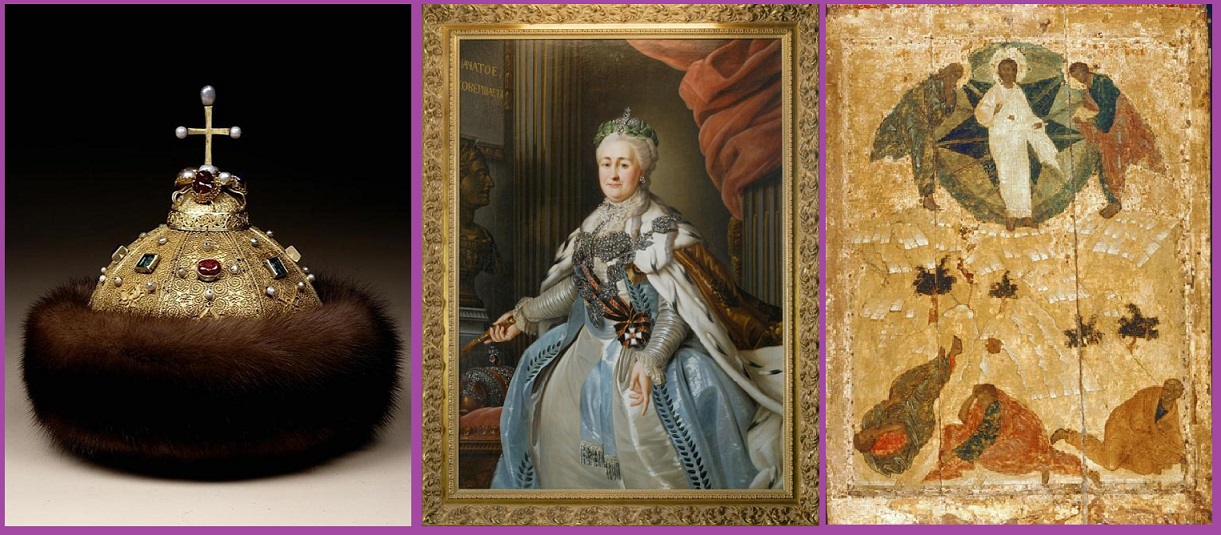

|
Kremlin Incident! |
One of the women on the trip was 85 years old and from Los Angeles. Helen was always very kind and interested in everything that was going on. As we were
coming out of the Armory and beginning our tour of the churches inside the Kremlin
wall, a Russian woman about 65 years old suddenly dropped to her knees on the rough stone court yard and shook her arms around as if in pain. Helen saw this and before any of us could do anything, rushed across the court yard in a streak, leaned over and took the woman by her shoulder and tried to pick her up. The woman floundered around and Helen kept trying to pick her up. A battle began and after much pulling back and forth, Helen realized that the woman was on her knees and was crossing herself in front of another church! Helen was not amused and told her to get a grip! So much for being a good
Samaritan!
We also went to the theater where the
Bolshoi performs and got to see Swan Lake which was spectacular but the ballets in Catherine the Great's private theater in St. Petersburg were as good and even more interesting.
Many churches and old buildings are being remodeled. Some hotels such as the Ritz and others are making deals with the Russians, not much payment for renting/buying buildings for new hotels but must renovate the old building back to their original glory. This way Moscow gets more jobs, gets old building renovated, and upscale the environment.
On the day that we were to go to another monastery just outside of Moscow, three of us decided enough was enough. We took the day off and decided to do our thing! We left the boat around 9 A.M. and walked about six blocks to the Metro. Each Metro is surrounded by markets selling almost everything, food, flowers, and a mix of utensils and hardware. The Metro stations have large glass windowed entrances and we wondered if they had ever been cleaned since they were built in the 1930s. Very dirty to say the least. But, the trains are on time, fly like the wind, and if you aren't on, the doors close and that's all they wrote. The stations are magnificent with marble pillars, terracotta figures, mosaics, and paintings. They were built as a model to impress the rest of the world but now that there is little money to keep up the stations, they are slowly breaking apart from old age. The Metro is very easy to use and we had no problem finding out where to get off for the sights but as in St. Petersburg, you don't stop or slow down when getting off of the escalators or you will be literally run over by the people behind you. Some of the escalators are two or three stories long, the longest ones we saw were in St. Petersburg. We wondered why the stations were so deep in the ground and we were told that they were also to be used as bomb shelters if needed.
We walked to the Moscovy River and decided to get on a sight seeing river boat but couldn't make the ticket person understand us. A school teacher with about 10 children around 12 years of age asked if she could help. She couldn't speak much English but one of the students was great. He said he was learning at home with his parents. We laughed with him and the children were all very courteous. The tall white building originally was the headquarters of the KGB!
Moscovy River Cruise
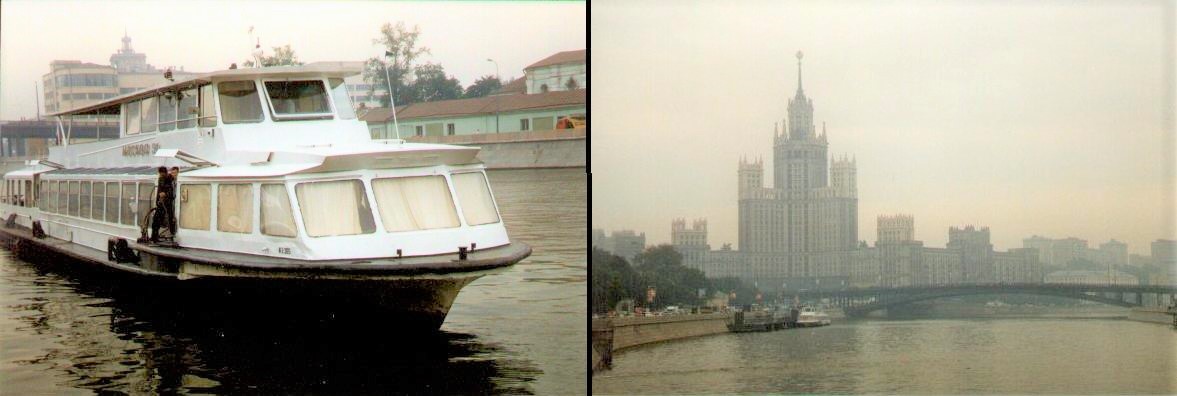 |
|||
|
|
We got off at Gorky Park and walked through the paths along lakes, flower gardens, and coffee houses. It was very nice. Since the Russian space science is at a stand still, their shuttle, which looks almost like ours, another copy, is now situated by the river as an amusement sight instead of a space vehicle. How the mighty have fallen. Continued over the bridge and found another station about four blocks away.
We did get off the Metro at the correct stop to go back to the boat but once we got on the surface we couldn't tell which direction to go. A woman in a business suit saw we were confused and tried to help us. An older woman with a brown, looked very communist, suit, hefty and forceful pushed the other woman aside and chatted on in Russian about where we should go. We shook our heads, don't understand, but she went right on. The other woman just shook her head and tried again. they started pushing each other! I finally said, Moscow River - boat???? I pointed different directions. Finally they both pointed the same direction so we ran off in that direction before we draw a bigger crowd over just trying to find our way back to the boat. All in all, a great day!
|
Overview of the Kremlin |
The Moscow Kremlin is the chief architectural ensemble of the city. It has few rivals in the number of unique masterpieces or architecture and other arts concentrated within its walls. The skyline of the Kremlin is strikingly majestic and picturesque. The might of its walls, its ridge-roofed towers and the three-dimensional expressiveness of the buildings clustered on its grounds offer panoramas of rare beauty. The irregular triangle of the Kremlin walls, repeating the out line of Borovitsky Cape, encloses an area of 27.5 hectares. The maximum height of the hill above the level of the Moskva River is about 25 meters. The ensemble of the Moscow Kremlin is the result of the efforts of many generations. Initially, it was a small fortified settlement which sprang up on Borovitsky Hill - a promontory at the spot where the Neglinnaya River flowed into the Moskva River. The oldest archaeological finds unearthed on the Kremlin grounds date back to the Bronze Age. Signs of a Slavic settlement here date to no later than the end of the llth century. At the time, the fortress on the top of Borovitsky Hill covered an area of about 5 hectares. The first Moscow fortifications consisted of a moat, a rampart and a palisade. At first, the fortress was called simply grad (city) or grad Moskva (the city of Moscow). The city built there on the orders of Prince Yuri Dolgoruky in the 12th century was 5 to 6 times as large as the initial area. In the 14th century, during the rule of Ivan Kalita, when Moscow became the center of a Grand Principality, the fortress - the seat of the Grand Prince of Moscow - was for the first time perceived as a separate, principal part of the city, as its nucleus. The chronicles indicate that the fortress was given a name of its own, the Kremlin (Citadel), in 1331. In 1339-1340, new walls and towers of oak were erected and in 1366-1368, during the rule of Dmitri Donskoi, a mighty white-stone citadel was built here. The Bell Tower of Ivan the Great (16th cent.)
Chuck and the Kremlin
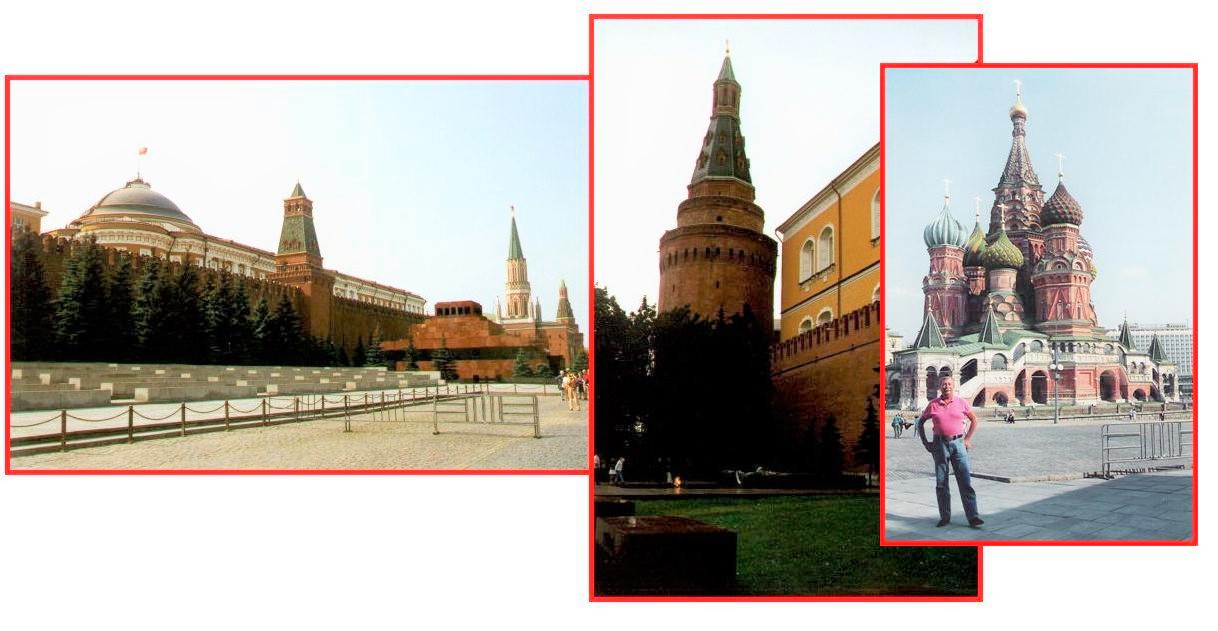
The intensive construction work in the Kremlin as a result of which Moscow came to be known as the "white-stone city" was carried on against the background of struggles with the Golden Horde and Lithuania and rivalry with Tver. Before long the new Kremlin successfully repulsed attacks of the armies of Grand Prince Olgerd of Lithuania (in 1368 and 1370). True, in 1380-1382 Khan Tokhtamysh attacked Moscow and with a ruse broke into the Kremlin, but the citadel, and the rest of the city, was soon rebuilt. By the end of the 14th century, the Kremlin was tightly packed with various structures. The whole of its grounds was covered with churches, monasteries and manors of the Grand Prince's retainers, top military men and rich merchants. The 15th century was marked by further growth of Moscow's political and military might. By the end of the 15th century, the unification of the Russian feudal principalities under the authority of Moscow was, in the main, completed. A single Russian state had been formed. Grand Prince Ivan Ill of Moscow became the Grand Prince of All Russia. Ivan Ill launched reconstruction of the Kremlin on a grand scale, having invited a number of noted master builders from Italy for the purpose. At the time, Italian builders were recognized as the best in Europe. And, so, alongside builders from Pskov, Novgorod and Vladimir who had come to the capital on the orders of the Grand Prince to take part in the construction of the city, the Italian architect and military engineer Aristotile Fioravanti arrived in Moscow together with his son Andrea and his apprentice Pietro.
The new Cathedral of the Dormition (1475-1479) was the first to be built. In 1484-1489, the festive Cathedral of the Annunciation was erected next to it. Subsequently, in 1505-1508, they were joined by the Cathedral of the Archangel. This is how this remarkable ensemble of Cathedral Square, the oldest square in Moscow, with its three cathedrals and the snow white Bell Tower of Ivan the Great took shape. Still another adornment of the square is the Palace of Facets, the formal reception room of the Grand Prince's palace, built by ëÞrco Ruffo (Fryazin)and Pietro Antonio Solari (Pyotr Fryazin) in 1487-1491. At the turn of the 16th century, the Kremlin was practically completely renovated: at the time, new Kremlin walls were built in parallel with the construction of the palace and the cathedrals. For a whole decade, starting from 1485, the dilapidated white-stonewalls and towers were gradually pulled down and replaced with new ones. The construction work was supervised by Italian architects. It was then that the Kremlin acquired its present-day outlines.
Many Churches in the Kremlin.
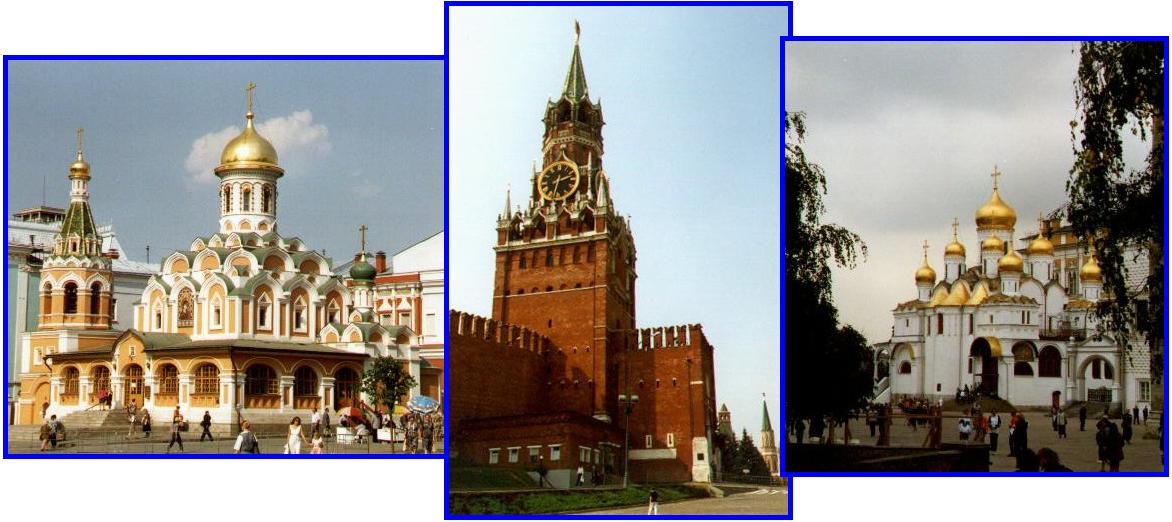
The fortress walls, forming an irregular triangle, are 2,235 m long, from 3.5 to 6.5 meters thick and from 5 to 19 m high. Atop the walls stand 1,045 bifurcated merlons, from 2 to 2.5 metres in height and fitted with narrow embrasures. Behind the merlons and running inside the wall is a combat platform from 2 to 4 metres wide. Along the east Kremlin wall facing what is now the Red Square a moat, 12 m deep and 32 m wide, was dug and filled with water. On its northwest side Borovitsky Hill was protected by the Neglinnaya River and on its south side, by the Moskva River. Thus the Kremlin fortress was surrounded by water on all sides like an island and could be entered only by way of drawbridges. The Kremlin was a superb example of the fortification art of the period.
|
Gums Department Store |
We stopped for coffee in the massive Gums Department Store which is huge. It is a glass gallery about two blocks long and four stories high. The products were of very poor quality, looked like things out of the forties. One person said that 80 percent of the products were European, very few Russian and that most people couldn't afford the products. Some people were shopping but not many buying.
 |
|||
|
|
|
Chuck in Red Square |
Here I am in front of the
Cathedral of St. Basil the Blessed in Red Square! The main square in Moscow is Red Square but before the
15th century it was a market place called
The Cathedral of the Protecting Veil also know as the
Cathedral of St. Basil the Blessed
after the saint
who was well known in Moscow and buried close by. It was built between 1555 and
1560 on the orders of Ivan the Terrible to commemorate the victory over the
Kazan Khanate. It is believed to have been built by a master builder by the name
of Postnik Barma. He created this complex of nine tower-like churches on
one foundation.
After building it, he became blind, but the rumor has it he
was blinded by Ivan so he could never build another church that beautiful again.
Each of the nine domes of the cathedral form the tops of separate churches, each
dedicated to a saint on whose feast day the Russian army achieved a victory. In front of the cathedral are two statues, one of Kuzma Minin
and the other Prince Dmitry Pozharsky, who saved the city from invasion by the
Polish troops led by the imposter False Dmitry II in 1612. Near the cathedral is
a small stone mound of white stone built in the 16th century where the tsar's
proclamations were read and public executions were carried out. In 1698 the
square saw the execution of the streltsi, royal musketeers, who, incited
by Sophia, Peter the Greats sister, rose in revolt against the tsar. In 1671
Stepan Razin was executed for leading a peasant uprising against the tsar and so
on and on.
Of course now Lenin is buried in
Red Square but perhaps not for much longer as the political
force now wants to bury him where he originally wanted to be buried, in St.
Petersburg. What was very interesting, only a few years ago there were lines of
Russians waiting to see his body. When we were there the only people in line
were tourists, nary a Russian in sight. How far the mighty have fallen!
Actually, ever place we went, the Russian people had nasty things to say about
the government They especially criticized the KGB and made nasty comments about
it whenever possible. Buying a T-Shirt in
Red Square!
I
On our next to the last day I suddenly wanted to get
some shirts for my nephew and sister. They love T-Shirts from around the world.
I told my friends I wanted some nice shirts and they suggested Red Square! Sure, and after the scene I had with the two brothers. So off we went to Red Square again on the subway because we also wanted to stop at Gums again and have coffee under the beautiful glass roof. We got to the square and of course couldn't find the brothers so we went for coffee, so European. Then back to the square and no one, where are they when you need them?
So we went to leave and heard this scream, "Hey you Americans!" I rushed over and pawed their T-Shirts looking for just the right ones. They thought it was funny and told us that they knew we would come back, it was in the stars,
Red stars I am sure!
People We met along the Way!
A Guard at Peter the Greats Grave Site and a woman selling
Russian Dolls at one of the Ships Stops!
Space.
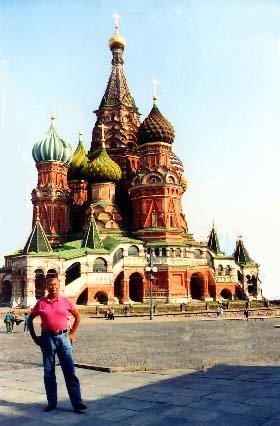 Krasnaya Polshcad the Great Marketplace. After a fire in
1403 which destroyed more than half of the wooden buildings, it was called
Pozhar (Fire Site)! Only in the
mid-17th century when official ceremonies began to be held here, stone buildings
were erected, and the decrees of the Tsar were announced at the southern end did
people begin to call it Krasnaya or beautiful which also means red.
Krasnaya Polshcad the Great Marketplace. After a fire in
1403 which destroyed more than half of the wooden buildings, it was called
Pozhar (Fire Site)! Only in the
mid-17th century when official ceremonies began to be held here, stone buildings
were erected, and the decrees of the Tsar were announced at the southern end did
people begin to call it Krasnaya or beautiful which also means red.
had visited Red Square several times and each time two brothers in their early 20's would chase us around and try and sell us T-Shirts. We kept saying "No - no - no!"
 It didn't seem to stop them until we told them to keep away from us or else. They were mad and said some nasty things about us behind our backs. Tough luck.
It didn't seem to stop them until we told them to keep away from us or else. They were mad and said some nasty things about us behind our backs. Tough luck.
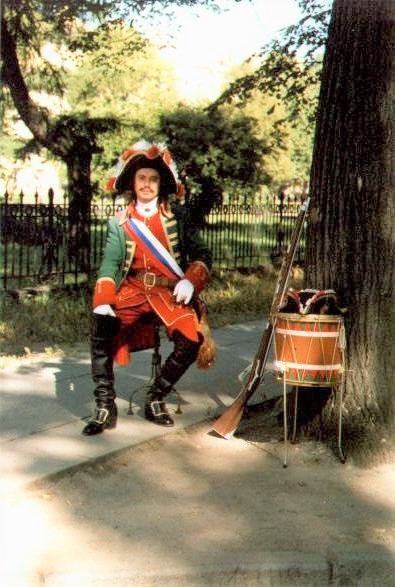
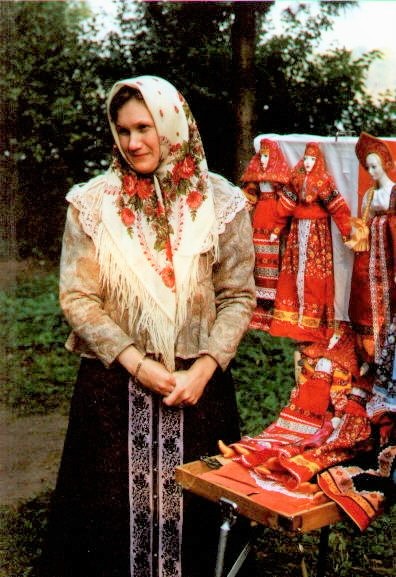
San Francisco California

Created on:
1996.10.24
Updated on:
2020.10.29